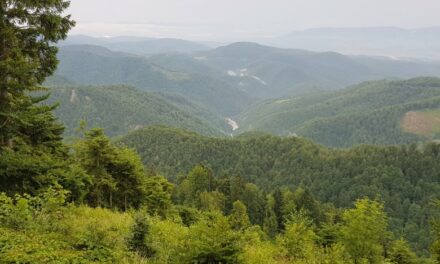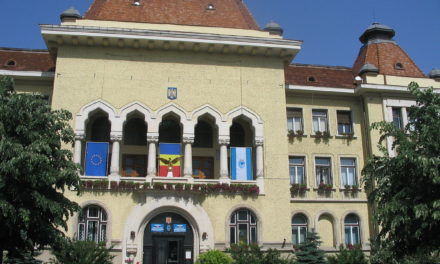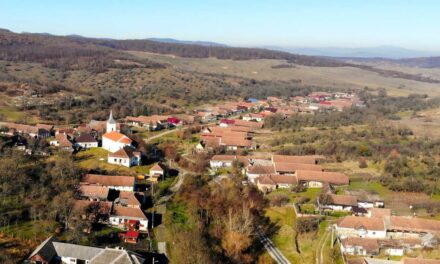Did they really come from Mongolia or are they the Cossacks of Hungary?
According to a Turkish linguist, the ancestors of the Szeklers migrated halfway around the world as allies of the Huns, and in the 4th century they minted their own money. On the other hand, a Hungarian archaeologist claims that Székelység was made up of freedom-loving poor Hungarian youths and became a community with its own identity during the time of Kálmán Könyves.
Two diametrically opposed theories regarding the origin of Székelysék have recently come to light. Mandiner with the creators of the two theories .
According to the theory published by the archaeologist Tamás Keszi, a staff member of the Intercisa Museum in Dunaújváros at the Hungarian Research Institute, Székelység was created in the 11th century from individuals and smaller communities trying to remove themselves from power. They settled in forested, marshy areas and borderlands that were little controlled by the royal power, and became an ethnic group as a result of a self-organization process. In this process
"charismatic leaders who managed their community successfully could play a role. This could also be the case with Csaba, known from the medieval Székely dialect, who then disappeared from the eyes of those who stayed at home on a business trip abroad.
- says Tamás Keszi.
This process may have been similar to the one that led to the birth of the Cossacks.
"The Cossack name (...) is of Turkish origin, meaning wanderer, wanderer. In other words, the ancestors of the Cossacks were exactly the kind of wanderers mentioned in the sources from the Árpád period. Their later fate was also similar: most of them were forced to depend on the ruler"
says the creator of the theory.
The hypothesis starts from the etymology of the name Székely. "The verb szöki is of Turkish origin, its pronunciation would be sec with today's spelling. The original sound form can also be found in the names Dunaszekcső and Kaposszekcső. The suffix -ly was attached to the verb sek-, which can be used to create nouns from verbs. Such words are ebb, tide, ulcer or the small. The interesting thing about the latter is that its base verb is also of Turkish origin, and we also find the ö sound in it: csök/ken. "Szekely" therefore means a fast-moving, escaping, "jumping" person," explains the archaeologist from Dunaújváros.
Autonomy for armed service
He does not consider it incidental that, according to Simon Kézai, the people of Székely took this name after they ran away from a battle:
"According to the medieval understanding, folk names can refer to certain qualities and actions of the people. In this spirit, Kézai wrote a sentence explaining the origin of the word Székely, which he still understood well."
In his view, the theory explains why the Székely folk name appears for the first time only at the beginning of the 12th century: the social group it was used to name was born only in the 11th century.
"The Szeklers are mentioned for the first time in the year of Kálmán's death: in the battle near the Olšava river, Hungarians, Pechenegs and Szeklers fight in separate formations against the army of the Czech king"
says Tamás Keszi. According to his view, the integration of the Székely groups took place during the reign of Kálmán Könyves, who pursued a militant foreign policy. According to the deal made with the authorities, the price of autonomy was armed service, and later that they were to settle in the eastern border region of Transylvania.
Mongolia, the homeland of Székely?
Aydemir Hakan, a Turkish linguist, published a study entitled Solving the Székely origin question, in which he claims that the Székely people come from Mongolia, including the area around the Tola River. The Turkologist of the Medeniyet University in Istanbul believes that the ancestors of the Szeklers can be found in the Shekel tribe, which appears in Chinese sources as sījié (斯結).
"The rise of the Ruru Empire in Inner Asia forced part of the Huns to flee between 350-370. They may have been joined by groups of the ancestors of the Szeklers, who seem to have belonged to the Asian Hun tribal confederation. Some of the ancestors of today's Székelys joined the Huns fleeing to the west and arrived in the region of the lower course of the Volga around 370, then in the Carpathian basin in the first half of the 5th century. At the same time, another part of them joined the Huns fleeing to the southwest and migrated to the region between the Ili River, south of Lake Balhas, and the Fergana Valley, which covers parts of present-day Kyrgyzstan, Uzbekistan, and Tajikistan. The settlement of the ancestors of the Szeklers in this area is preserved by a place name Sekelek in the eastern tip of the Fergana basin and a pass with the same name a little further away.
In this region, the ancestors of the Szeklers were able to create a political entity with some degree of independence, as they issued their own coins at the end of the 4th century. On these coins, next to a figure of a horse, the name of the Szeklers appears in Sogdian script in the form ʼsklk, i.e. as eskelek (eszkelek)”
- said the Turkish researcher to Mandiner .
Attila's people?
All of this can explain the Hun and Attila tradition of the Szeklers. Anonymus' meaning that "the Szeklers, who were the people of King Attila in the beginning" may also refer to this relationship. According to the theory, the Szeklers came to the Carpathian basin with the Huns, and remained here even after Attila's death in 453, moving to the Eastern edge of the Carpathians.
According to Aydemir Hakan, the Szeklers joined the conquering Hungarians in the Carpathian Basin.
"There could have been strategic reasons for the Szeklers joining the Hungarians," the linguist believes. According to him, "many small signs together indicate that the Szeklers were Turkish-speaking. (...) The Szeklers lost their Turkish language in all probability towards the end of the 12th century, at the latest at the beginning of the 13th century".
The two researchers mutually refute each other's theory.
What does genetics say?
There is a consensus among linguists that Székely is highly dialectically divided, and that individual dialects show affinities with groups living in parts of the Hungarian-speaking area far from the present-day Székelyföld (Pozsony rural, ũrség, Slavonian, South Barany). Historical sources and place names (Székelyhíd in Bihar, Székelyjó in Cluj County, etc.) consistently point to the fact that during the Árpád era, the Szeklers did not live in the present-day Székelyföld, but much further west. The name Székely appears for the first time in Transdanubia, as a personal name, in the form of Scichul, in the 1037 charter of the Bakonybéli Abbey.
Not a single written source is known to suggest that the people of Székely did not once speak Hungarian.
The genetic research so far does not really support the theory according to which the Székely people came from Mongolia and lived continuously under the slopes of the Eastern Carpathians for more than a millennium and a half. In 2019, the staff of the Archaeogenomics Institute of the ELKH Humanities Research Center conducted a population genetics study in Udvarhelyszék. During this, maternal and paternal lines of descent were researched. Among the 90 subjects, only one paternal line of descent was found, which is related to a person buried in the 5th century in Transylvania. The researchers came to the conclusion that
"the investigated population of Udvarhelyszék shows a predominantly local, i.e. East-Central and South-Eastern European composition, with moderate mixing with neighboring populations".
Featured image: Facebook/Székely flag around the world













